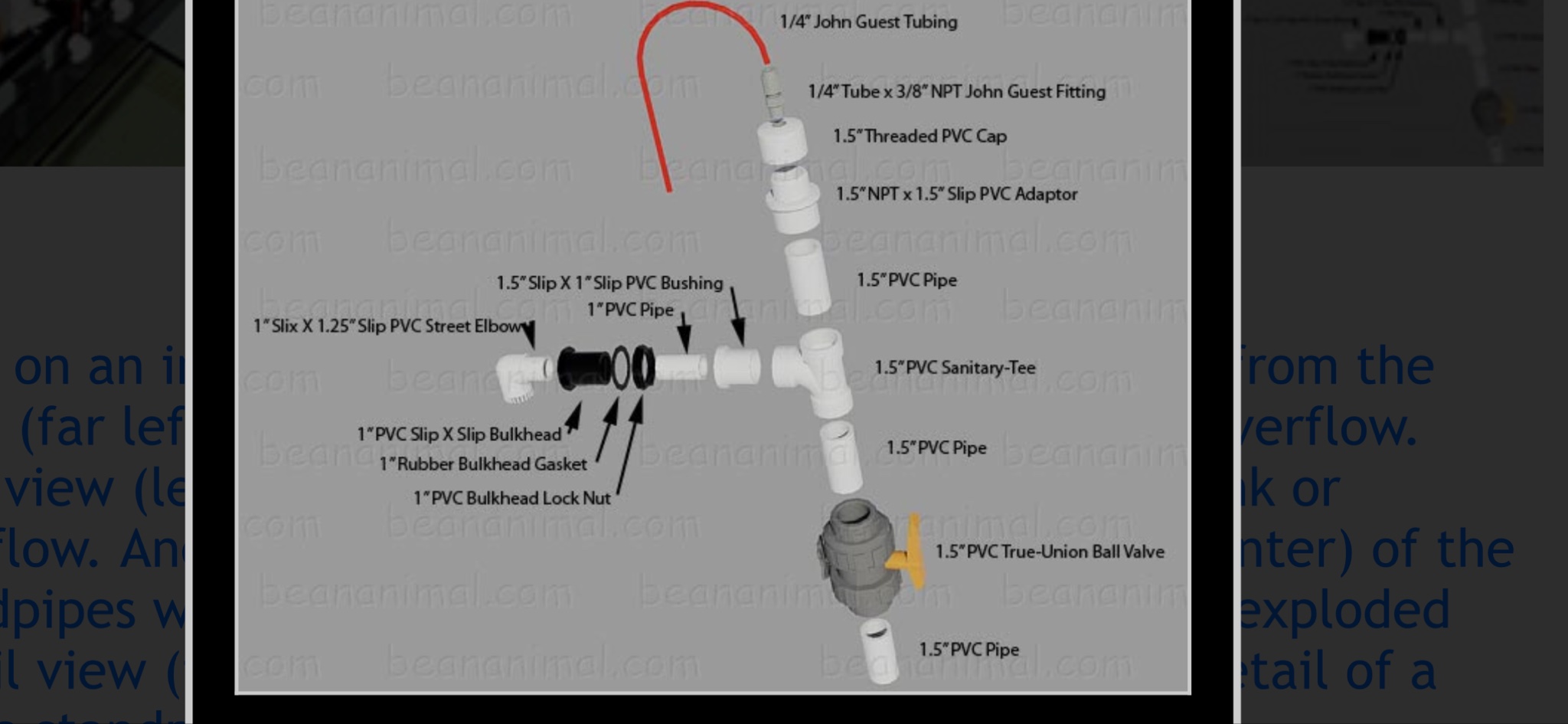One more thing that I haven't seen mentioned yet: make sure that you have your drains a sufficient distance below the top of your tank to allow for the necessary flow rate. This is mostly a concern for the non-durso emergency drain.
For example, if the non-durso emergency drain is rated for 500 gph (based on diameter of the pipe), usually that assumes that it is being "fed" water at the full rate that it can handle. That will usually require an inch or two or more of water above the top of the drain pipe. If the top of your tank is only 1/2 inch above the top of your non-durso emergency, then it will likely never have the full 500 gph (in this example).
So in this example, if your return pump is putting 500 gph back into your tank, and your siphon and durso drains are completely blocked (hopefully a rare or never occurrence), the non-durso emergency drain could NOT keep up with your return pump, and the water will overflow the tank, onto the floor of your room.
I've scoured the internet but was not able to find a chart that showed how much water you need above a non-siphon, gravity drain in order to get the full flowrate.



